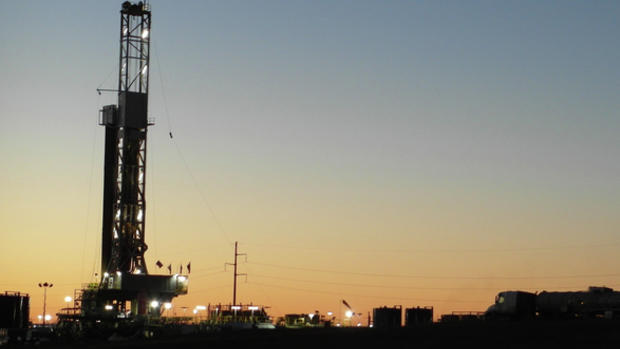North Dakota Oil Production up 20 Percent Over Biennium Forecast, Tax Collections up 10 Percent

Crews work at an oil well site near Williston, N.D., on Wednesday, Oct. 12, 2016. Amy Dalrymple/Forum News Service
In his state of the state address this week Governor Doug Burgum warned that North Dakota isn’t out of the woods yet when it comes to the state budget.
That said, a revived oil industry in the state is bringing state policymakers some good news. North Dakota lawmakers just got a report on revenues from oil taxes that was filled with good news.
You can see the report (shared with me by a lawmaker) below.
It shows:
- Average daily oil production was 29 percent above forecast in January, and has run 20 percent above forecast biennium to date
- The average price per barrel of oil was 13 percent above forecast in January, though still 4 percent below forecast biennium to date
- Oil and gas tax revenue collections were up 36 percent in January, and are up 10 percent – or nearly $80 million – biennium do date
This doesn’t solve North Dakota’s budget issues. We shouldn’t want a resurgent oil industry to solve our state’s budget problems. Building budgets on the back of revenues generated by one of the most volatile industries in the world is a bad idea.
Still, it’s good news. From the report below, this chart shows how oil and gas tax revenues have exceeded forecasts so far in the biennium:

Here’s a table breaking down how these revenues have impacted all the various “buckets” (to use the parlance deployed by lawmakers) that oil and gas tax revenues flow into.
Look, in particular, at the revenues flowing to the Three Affiliated Tribes of the Fort Berthold Reservation. The tribe and the state have been meeting over threats made by tribal leadership to withdraw from tax share agreement that has the tribe sharing in revenues the state collects instead of levying their own tax.
The tribe says changes the legislature made to the oil tax rate – changing it to a flat 10 percent rate with no triggers – are costing them revenues. Yet, looking at this table, the tribe’s are a whopping 91 percent over projections:

Here’s the full report:
[scribd id=369997755 key=key-dkfQgQ6qxs0P8aa2ju1V mode=scroll]




